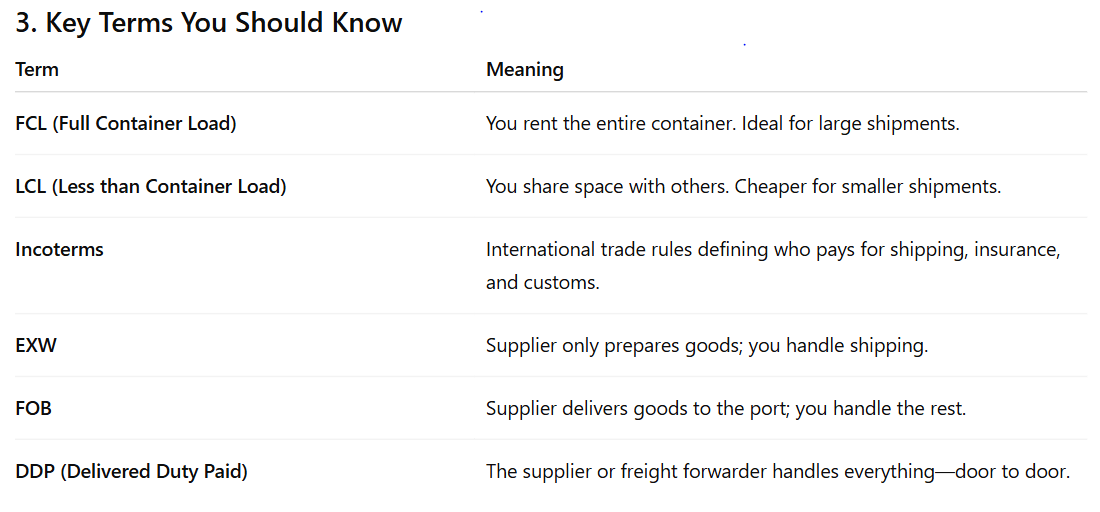Freight Forwarding & Shipping Made Simple (Beginner’s Guide to E-commerce Logistics)

Introduction
You’ve found your winning product and a reliable supplier — now comes the next big challenge: shipping your products safely and on time.
For many new e-commerce sellers, shipping can seem confusing — full of terms like freight forwarder, FBA, and customs clearance. Don’t worry! In this guide, we’ll break everything down into easy-to-understand steps so you’ll know exactly how to move your products from the supplier’s warehouse to your customer’s doorstep.
1. What Is Freight Forwarding?
A freight forwarder is a company that helps you transport goods from one country to another.
They manage the entire shipping process — from picking up your goods at the supplier’s factory to delivering them to your destination (Amazon warehouse, your storage, or 3PL center).
Think of them as your shipping manager who handles all the difficult parts for you.
2. Types of Shipping Methods
1. Air Freight ✈️
Speed: Fast (5–10 days).
Cost: Expensive.
Best for: Small, lightweight, or urgent shipments.
2. Sea Freight 🚢
Speed: Slow (25–45 days).
Cost: Cheap for large quantities.
Best for: Bulk shipments (100+ kg).
3. Express Courier 📦 (DHL, FedEx, UPS)
Speed: Very fast (3–7 days).
Cost: Highest per unit.
Best for: Samples, small test orders, or dropshipping.

👉 For beginners, DDP shipping is easiest since it includes customs and delivery to your door or Amazon warehouse.
4. The Step-by-Step Shipping Process
Step 1: Get a Quote
Once your products are ready, contact a freight forwarder. Give them details like:
Pickup address (supplier’s location)
Destination (your country or FBA warehouse)
Package weight and dimensions
They’ll give you a shipping quote.
Step 2: Book the Shipment
Confirm the quote and schedule pickup. Your forwarder handles documentation, labeling, and export paperwork.
Step 3: Customs Clearance
The freight forwarder ensures your shipment passes through customs legally. (They might ask for invoices, product details, or certifications.)
Step 4: Delivery
Once cleared, your goods are delivered to your address, fulfillment center, or directly to Amazon if you use FBA.

6. Tips for Smooth Shipping
✅ Work only with experienced freight forwarders.
✅ Always insure your shipment (especially for large orders).
✅ Confirm all labels and packaging requirements for FBA or TikTok warehouses.
✅ Track your shipment regularly and stay in contact with your forwarder.
✅ Plan ahead — delays are common in sea freight.
7. Common Mistakes to Avoid
🚫 Choosing the cheapest freight forwarder without checking reviews.
🚫 Forgetting to include shipping costs in your profit calculation.
🚫 Not asking about customs duties or import taxes.
🚫 Shipping restricted or unverified items.
Conclusion
Shipping doesn’t have to be scary. Once you understand the basics — air, sea, courier, and the role of freight forwarders — it becomes just another step in your business. Start small, communicate clearly with your forwarder, and always plan for extra time and cost in international shipping.
👉 In our next blog, we’ll move to the listing stage — how to create and optimize your product listing so your products stand out and sell faster.
Join the conversation
Sign in to share your thoughts and engage with other readers.
No comments yet
Be the first to share your thoughts!